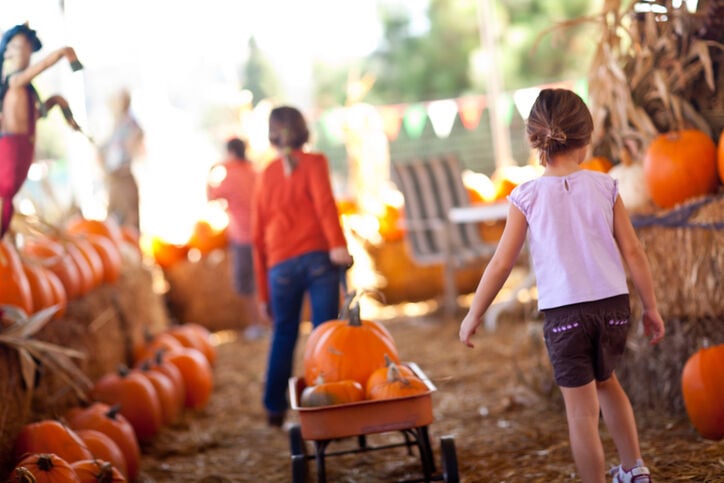HERSHEY, Pa. — Pick-your-own pumpkin patches have certainly become popular attractions, but are plentiful pumpkins enough?
A panel of growers at the Mid-Atlantic Fruit and Vegetable Convention Jan. 28 all agree that pumpkins plus agritainment tends to work best.
While pumpkins play a vital role at Butler’s Orchard and Farm Market, Carpenter’s Pumpkin Farm, and Ramsey’s Farm, the popular orange produce is just one of a wide variety of offerings that bring people out to the farms in the fall.
“I think that everything we do, you’re going to find fun in the farm,” Carl Ramsey said.
Carl and his dad, Stewart, who were both on the panel, run Ramsey’s Farm in Wilmington, Delaware.
In addition to growing 15 acres of pumpkins, Ramsey’s Farm has a corn maze and hayrides, and hosts events like a bonfire and goat yoga.
“The way we look at our farm, it’s about the experience,” Stewart said.
Ben Butler of Butler’s Orchard in Germantown, Maryland, feels the same way.
Butler grows 20 acres of pumpkins that he sells through a you-pick patch and at a farm stand. But the most popular pumpkin experience is the farm’s fall festival.
“Our fall festival is our main piece of the puzzle for the year,” Butler said. “We make about 60% of our income in a seven- to eight-week period. So it’s a big deal for us.”
Admission to the festival includes access to the pumpkin patch, hayrides, a corn maze, music, farm animals and more.
John Carpenter of Carpenter’s Pumpkin Farm in Linden, Pennsylvania, has been growing 20 acres of pumpkins for 30 years and has seen his customer base quadruple thanks to marketing pumpkins and agritainment on social media.
“Whatever it takes to get people to come,” he said.

From left, John Carpenter, Carl Ramsey, Stewart Ramsey and Ben Butler speak on a panel on at the Mid-Atlantic Fruit and Vegetable Convention on Jan. 28, 2025 in Hershey, Pa.
Part of what draws people into a pumpkin patch is variety, Carpenter said, so he focuses on ordering as many types of pumpkin seed as he can.
And seed quality is also important.
“If you don’t start with good seed, you might as well stay in bed,” Stewart Ramsey said.
At Ramsey’s Farm, they’ve seen unique pumpkin varieties — like warty pumpkins and colors other than the typical orange — grow in popularity in the past several years.
The Ramseys mix all their seed varieties together to plant in the patch, which adds to the customer experience.
“It’s a treasure hunt when folks are out in the field,” Stewart said.
Sending customers into the fields with wagons or wheelbarrows tends to lead to more sales.
At both Butler’s and Ramsey’s, checkout is expedited by weighing pumpkins in the wagon on scale and subtracting the weight of the wagon.
The Ramseys charge 80 cents per pound and Butler charges 75 cents per pound.
Carpenter charges by the piece depending on size or quality, but he estimates that it comes out to about 60 cents per pound.
The majority of consumers buy pumpkins as decorations. All of the panelists still grow and sell cooking varieties, but Butler and the Ramseys don’t think many of their customers use them for cooking.
Carpenter, on the other hand, sees a demand for the culinary varieties so he always makes sure to grow plenty.
While all of the panelists had a successful year in 2024, they acknowledged the difficulty in having a short season that is reliant on good weather.
“What you have to remember is that this whole business pretty much gets done on six or seven weekends,” Carpenter said.
Luckily for the panelists, last fall saw plenty of sun, leading to customers turning out every weekend to buy pumpkins and enjoy the various agritainment offerings.
“We’ve got plenty of customers,” Butler said. “Our goal is to make it easy for them.”





